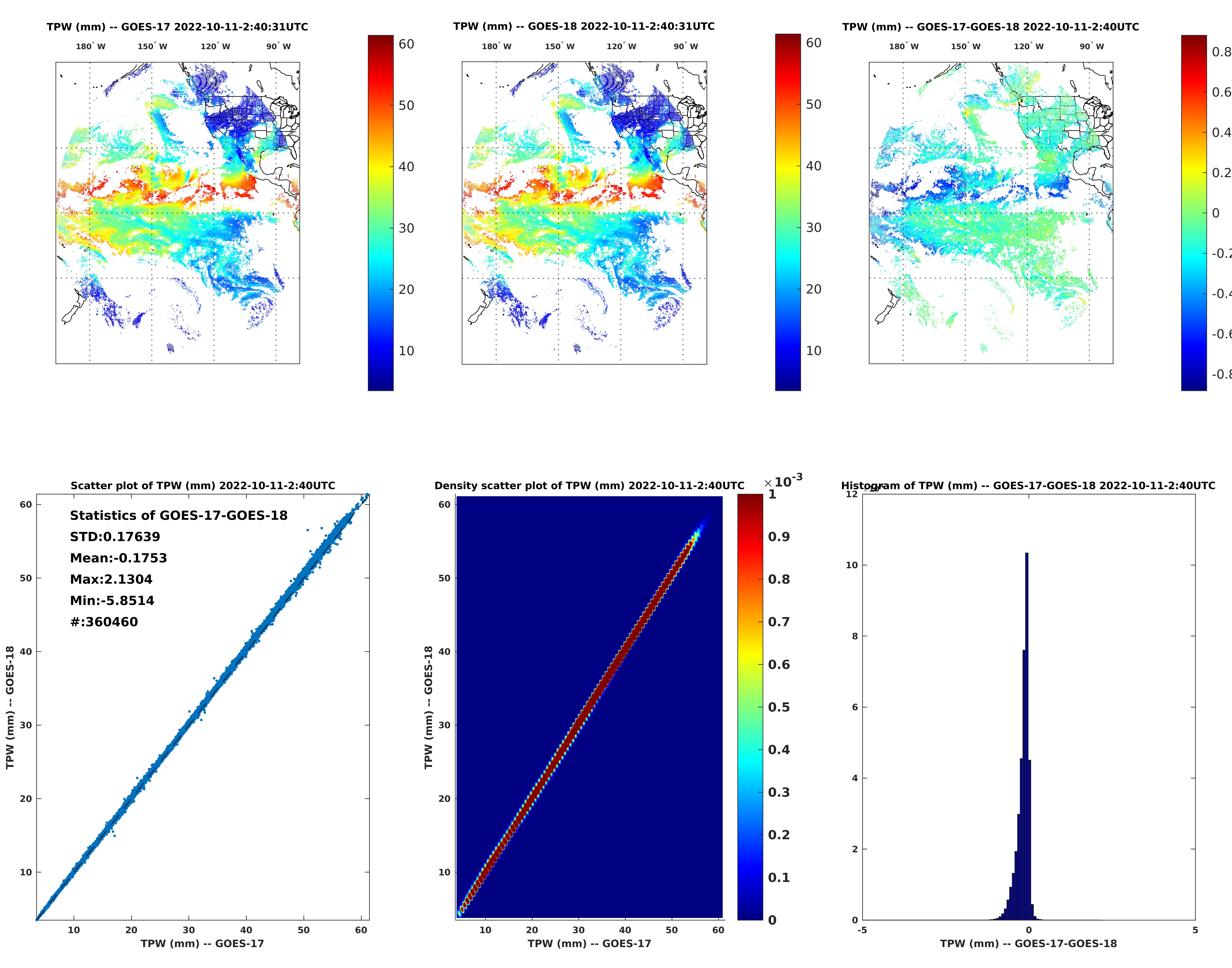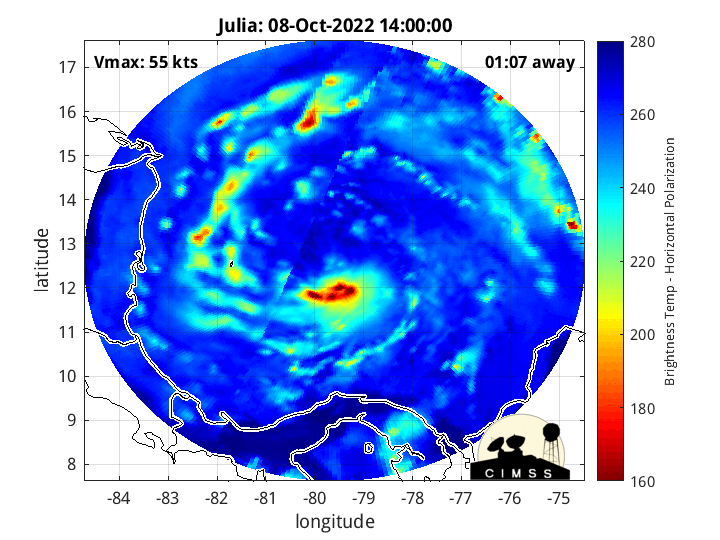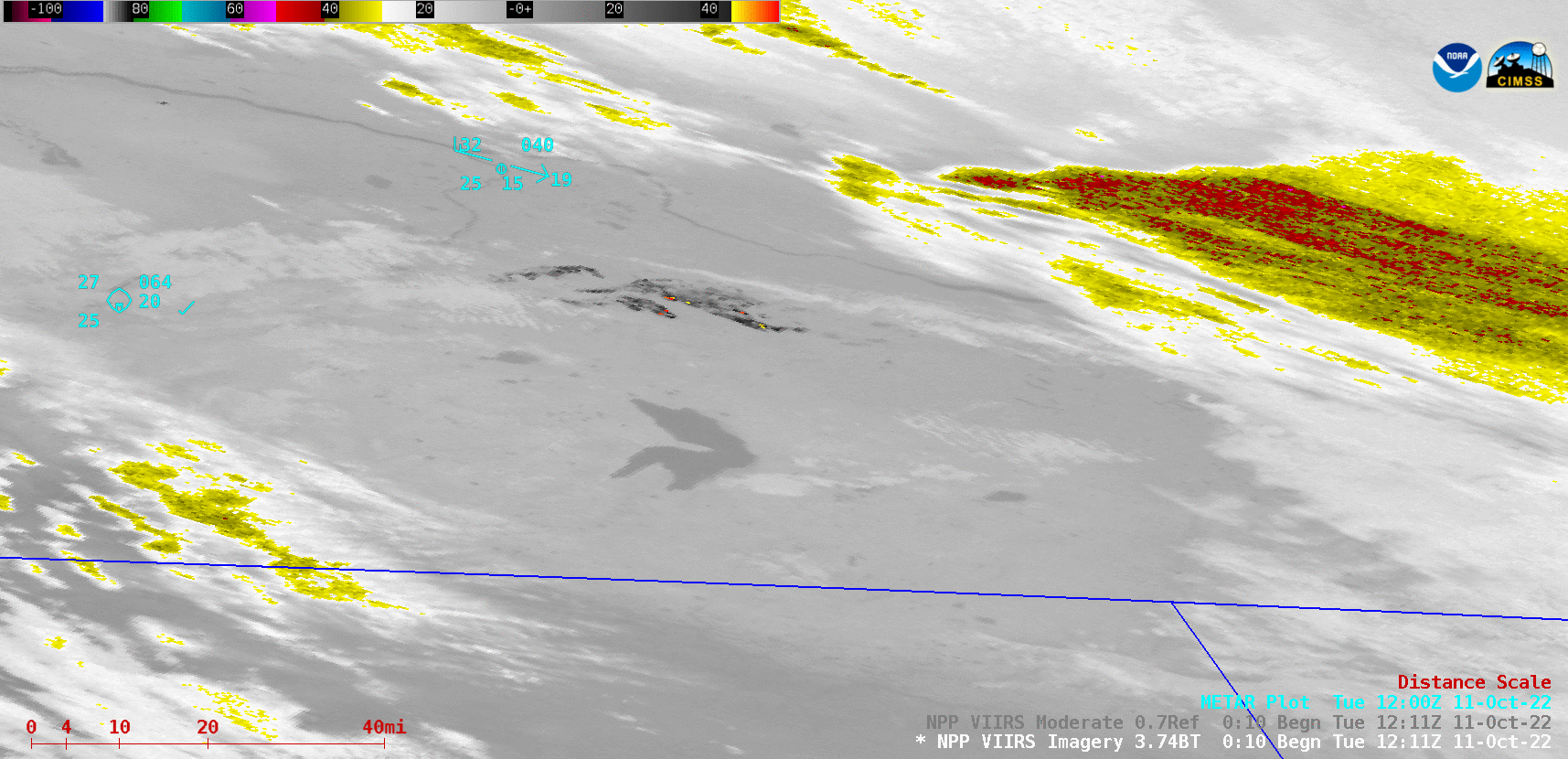
[ Archive ]

 |
CIMSS-NOAA Weekly Report [ Archive ] |
 |
CIMSS AND ASPB WEEKLY HIGHLIGHTS FOR THE WEEK ENDING OCTOBER 14, 2022
DATA, INFORMATION, AND USE-INSPIRED SCIENCE:
GOES-18 ABI Fires and Sounding Acquire Provisional Maturity: Scientists from the University of Wisconsin-Madison Cooperative Institute for Meteorological Satellite Studies (CIMSS) and NOAA/NESDIS/Center for Satellite Applications and Research (STAR) presented to the review team several Geostationary Operational Environmental Satellites (GOES)-18 derived products. On October 12, 2022 the GOES-18 Advanced Baseline Imager (ABI) Derived products of Fire Detection and Characterization and Legacy Atmospheric Profiles (and Total Precipitable Water (TPW) and derived stability parameters) products were declared Provisional Validation maturity by the Peer Stakeholder-Product Validation Review (PS-PVR). Both teams presented evidence as to why these GOES-18 products are ready to move from the beta maturity stage. (C. Schmidt, CIMSS, 608-262-7973; Z. Li, CIMSS, 608-890-1982; T. Schmit, E/RA2, 608-263-0291)
 (Click image to enlarge)
(Click image to enlarge)
Figure: Example from the sounding validation page (https://soundingval.ssec.wisc.edu/imagery) of GOES-18 and GOES-17 Total Precipitable Water (TPW) comparisons in the overlap region.
FUTURE OUTLOOK:
AWARDS AND RECOGNITION:
TRAVEL AND MEETINGS:
CIMSS Participation at Typhoon Committee Training in Malaysia: Scott Lindstrom from the Cooperative Institute for Meteorological Satellite Studies (CIMSS) gave presentations on Scatterometry, Synthetic Aperture Radar (SAR) winds, NOAA-Unique Combined Atmospheric Processing System (NUCAPS) Profiles, JASON altimetric waveheights and the CIMSS Tropical Weather Website (http://tropic.ssec.wisc.edu) to early-career forecasters at a Typhoon Forecasting Techniques Workshop held in Petaling Jaya, Malaysia from 11-13 October 2022. These in-person lectures were presented to about 30 students, with others attending on-line, from countries throughout Southeast Asia. The workshop was sponsored by the United Nations ESCAP/WMO (Economic and Social Commission for Asia and the Pacific/World Meteorology Organization) Typhoon Committee. (S. Lindstrom, CIMSS, 608 263 4425)
TRAINING AND EDUCATION:
MEDIA INTERACTIONS AND REQUESTS:
SOCIAL MEDIA AND BLOG Posts:
SSEC and CIMSS Scientists in the News: Scientists at the University of Wisconsin-Madison (UW) Space Science and Engineering Center (SSEC) and the Cooperative Institute for Meteorological Satellite Studies (CIMSS) provide expert interviews, imagery and case studies to promote science. This week: 1. UW-Madison Atmospheric and Oceanic Sciences graduate student Kelton Halbert has worked with CIMSS researchers to create supercomputer simulations of supercells and long-track tornadoes to better understand mechanisms of tornadogenesis. Halbert has since taken a position with the Cooperative Institute for Severe and High-Impact Weather Research and Operations (CIWRO) in Norman, OK. SSEC News published this story: https://www.ssec.wisc.edu/news/articles/14730 . 2. CIMSS Satellite Blog contributors Scott Lindstrom and Scott Bachmeier published these case studies: Hurricane Julia makes landfall in Nicaragua" (Oct. 8), “Pyrocumulonimbus clouds in Canada’s Northwest Territories” (Oct. 10) and "Effects of convection over the Southwestern United States and over the Pacific Ocean (Oct. 7). Read more at the CIMSS Satellite Blog: https://cimss.ssec.wisc.edu/satellite-blog/. (K. Halbert, AOS, S. Lindstrom, CIMSS, S. Bachmeier, CIMSS, E. Verbeten, SSEC, 608-263-4206)
 (Click image to enlarge)
(Click image to enlarge)
Figure: A Morphed Integrated Microwave Imagery at CIMSS (MIMIC-TC) animation of Hurricane Julia on Oct. 8-9, 2022 showed that a closed eyewall formed around the time of landfall. Read more at the CIMSS Satellite Blog: https://cimss.ssec.wisc.edu/satellite-blog/archives/48291. Credit: CIMSS.
 (Click image to enlarge)
(Click image to enlarge)
Figure: Suomi-NPP VIIRS Shortwave Infrared and Day/Night Band images on Oct. 11, 2022 revealed thermal signatures of individual active fires around the periphery of the fire complex located southeast of Fort Simpson in Canada's Northwest Territories. Read more at the CIMSS Satellite Blog: https://cimss.ssec.wisc.edu/satellite-blog/archives/48321. Credit: NOAA, CIMSS.
PUBLICATIONS:
OTHER:
| Archived Weeklies Page | Submit a report item |